As one of the first soldiers to shoot a powerful 30mm cannon from a new Stryker combat vehicle, US Army Staff Sgt. Randall Engler was excited about what the weapon could do for his infantry squad.
“It’s empowering,” said Engler, of the 2nd Cavalry Regiment, which has asked the Army to give its Stryker fleet more lethality to deter Russia and other near-peer threats. “You’re laying that hate [on a target] with a bigger round. It’s doing a lot more damage and you’re getting better effects.”
According to a release, the Soldiers also tested the new CROWS-J system, a common remote-operated weapons station that allows troops to fire Javelin anti-tank guided missiles from the safety inside existing Stryker models.
“We try to get users on the platform early on, that’s why there are crews from 2nd Cavalry here now,” said Col. Glenn Dean, the US Army’s Stryker program manager, during a media event Tuesday at Aberdeen.
Six Stryker vehicles from each 30mm cannon and Javelin variant are slated to head to Germany this January, where more 2nd Cavalry Soldiers will be able to share their input. The US Army hopes to field the combat vehicles in a forward location next summer when the regiment’s 1st Squadron is expected to go to Poland, Dean added.
During the recent 30mm cannon testing at, the US Army claim soldiers saw a vast improvement in accuracy compared to the .50-calibre machine gun, which is mounted on many Stryker vehicles.
“With this, we’re seeing a shot group about the size of a basketball,” Sgt. 1st Class Nicholas Young, senior NCO of the Army’s Stryker program, said of the remote-operated cannon hitting a target at 1,800 meters away. “If I aim at something, I know I’m going to hit it and I’m going to do damage to it.”
Soldiers do lose some situational awareness after designers had to accommodate the large cannon on the unmanned turret. Vision blocks in the front of the Stryker have been added and there’s the possibility of putting cameras on future vehicles, depending how 2nd Cavalry formations react to the vehicles in testing.
“It will take some getting used to,” Young said of the loss of situational awareness, “but eventually we’ll be able to find some solutions to integrate into the vehicle to assist with that.”
If given the choice between a hatch to look out of and a 30 mm cannon capable of shooting 200 rounds per minute, many Soldiers may prefer the extra lethality.



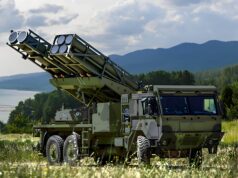

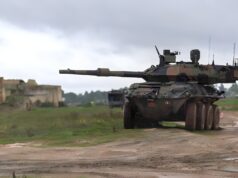
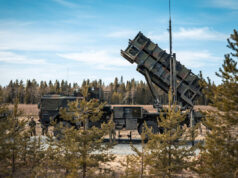
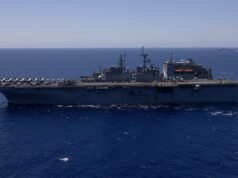
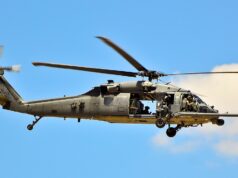
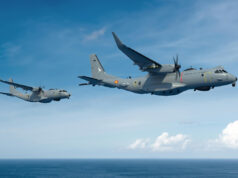


British troops would love to have the new Stryker in place in the current fleet of old broken vehicles.
Shame there’s no money in the budget in procure such vehicles
I doubt they’d want Strykers
The Stryker has served America ok-ish.
In the world of 8×8’s, the old Mowag it’s based on is behind the times.
If Britain wants a fleet of 8x8s, the Patria AMV/AMV-XP would be a much better choice.
Anything would be better than the current aged vehicles. If we could procure strykers at the same price as the US army, similar to ah64e and jltv purchases, then it would be a cost affordable solution.
Many excellent choices for 8×8 solutions, just a question getting the balance of capability and affordability right.
You do realize that there is really nothing the patria has over the Stryker is it swims better? When Patria entered production it was better armored but since 07 and especially since 11 the Stryker is much better armored. The only problem with the Stryker is weight. Which is only really a concern for Amphib operations (one of the reasons the USMC bought the LAV) or you don’t have the strategic lift ability by land or sea to move it to theater.
And since the Stryker is made in the US and Canada and not Finland it is much cheaper.
What about the Ajax?
That’s going to be appearing in larger numbers over the next 5 years.
The Ajax is replacing the Scimitar. The UK is still trying to buy a 8 wheeled vehicle like the Stryker to operate alongside the Ajax.
The UK has been looking for 8×8 since the 1990s to replace the aged 432 bulldog vehicle.
Yet despite the last Labour government spending over £200m on various 8×8 projects, including boxer and FRES UV not a single 8×8 has been delivered to the army.
As Ben says Ajax replaces the scimitar range of vehicles, Mastiff is not suitable for cross country so the 432 will soldier on into the 2020s and beyond despite being procured in the 1960s and deemed unfit for combat (due to its vulnerability to IEDs and the most basic of RPG warheads) in Iraq and Afghanistan.
Such is the current state of the UK armed forces, having to make with obsolete equipment and in some cases no equipment at all.
warrior was the replacement for 432,but they did not make enough of them..they were also supposed to make a mortar variant with a stronger floor after they tried a 5 round fire for effect from an 81mm and snapped the chassis,but it never happened so mortars were stuck with the 432 like the medical teams…all the 432 infantry variants in my battalion were stripped and shipped somewhere to make an artificial reef